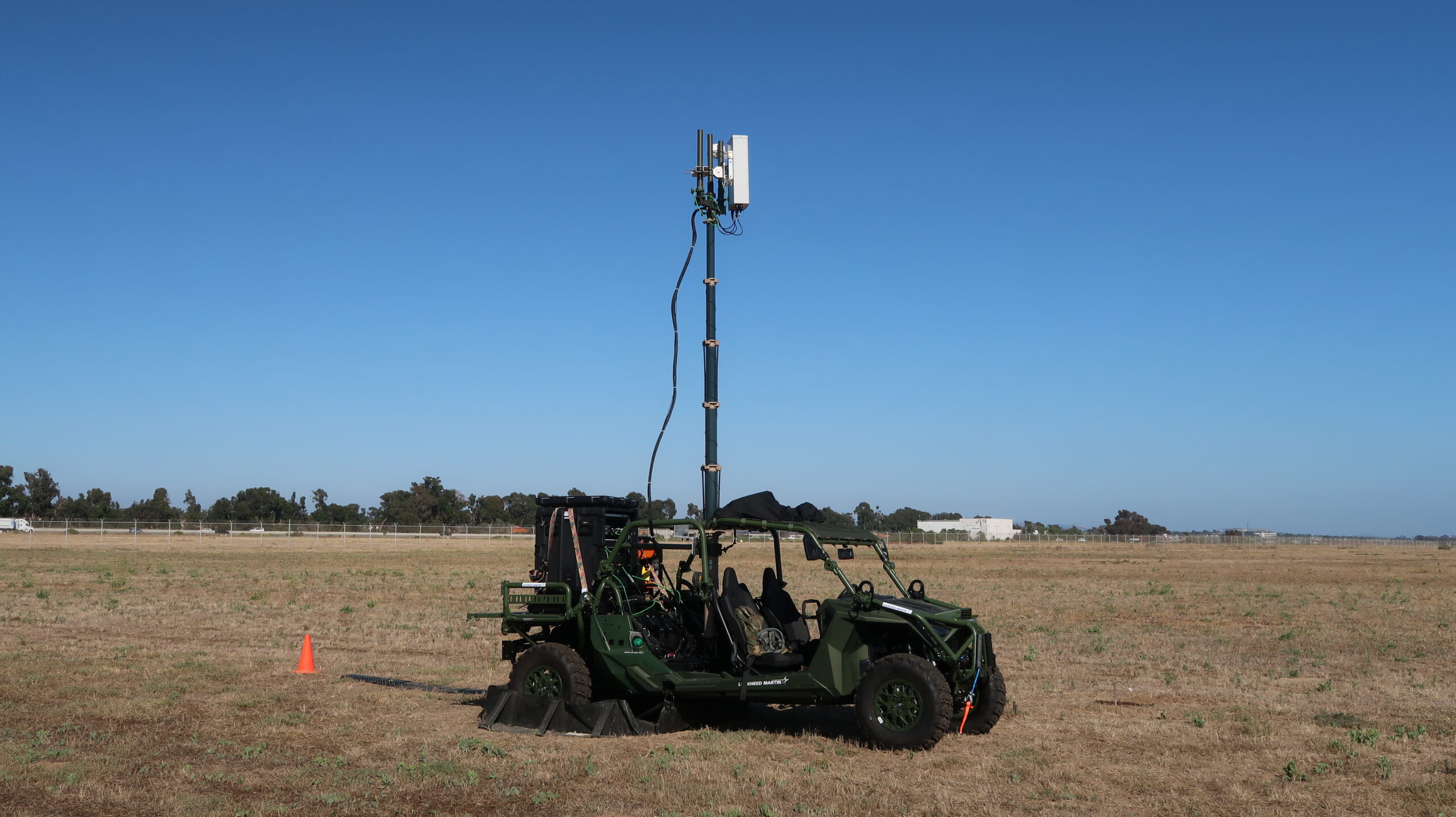JASPREET GILL

WASHINGTON — The Marine Corps over the next 15 months will be experimenting with a new prototype 5G communications network infrastructure testbed built by Lockheed Martin under the Pentagon’s Open Systems Interoperable and Reconfigurable Infrastructure Solution (OSIRIS) program, the company announced today.
According to Lockheed, Marines at Camp Pendleton, Cali., will begin “mobile network experimentation” now that the company has delivered the final phase 1 OSIRIS prototype. The company was awarded a $19.3 million contract to build the testbed in 2022 for OSIRIS, a program born out of the Pentagon’s FutureG and 5G Office meant to help rapid experimentation and integration of commercial tech. Lockheed is working with subcontractors Intel Corporation, Radisys Corporation and Rampart Communications to evaluate the technology and demonstrate it as part of a Fleet Marine Force event.
The testbed will ultimately support the Marines’s “Expeditionary Advanced Base Operations (EABO) goals, which involve Marines operating in contested environments with increased bandwidth requirements,” the release says. “Additionally, the OSIRIS system aims to reduce overall set-up time.”
In February 2022, Deon Viergutz, vice president for spectrum convergence for Lockheed Martin, told reporters that the network infrastructure testbed would “allow for the connection of various 5G-ready user devices, sensors, vehicles and end points to explore the military’s utility of commercial 5G technologies and pave the way for onboarding of new technologies from other OUSD investments while addressing cybersecurity requirements.”
At the time, Viergutz added that the testbed also aims to advance the Pentagon’s Joint All Domain Command and Control concept to connect sensors to shooters by addressing two “key enablers” of 5G technologies: high bandwidth and low latency.
According to today’s announcement, Lockheed will assess and select “emerging wireless technology” that will be built out of OSIRIS “concluding with three distinct 5G standalone network configurations:” a trailer-mounted 5G nomadic tower, an ATV-mounted 5G mobile relay and a transit case deployable 5G operational facility.
Lockheed is one of several companies the Defense Department has worked with to further its 5G efforts. In 2020, DoD awarded two “tranches” of pilot projects focused on enabling 5G networks at US bases, including over 100 companies with work spanning across all military services.
For example, for the Air Force, Nokia looked at alternative approaches to share spectrum between military radars and 5G communications in the commercial sector. With the Navy, efforts included a smart warehouse initiative focused on supplies being packaged for delivery and digital tracking. Meanwhile, DoD was also looking for ways to build 5G networks for virtual reality and augmented reality training for the Army.
“The Department of Defense is at the forefront of cutting edge 5G testing and experimentation, which will strengthen our nation’s warfighting capabilities as well as US economic competitiveness in this critical field,” Michael Kratsios, then-acting under secretary for research and engineering, said in 2020 when DoD awarded the pilot projects. “Through these test sites, the Department is leveraging its unique authorities to pursue bold innovation at a scale and scope unmatched anywhere else in the world. Importantly, today’s announcement demonstrates the Department’s commitment to exploring the vast potential applications and dual-use opportunities that can be built upon next-generation networks.”
No comments:
Post a Comment